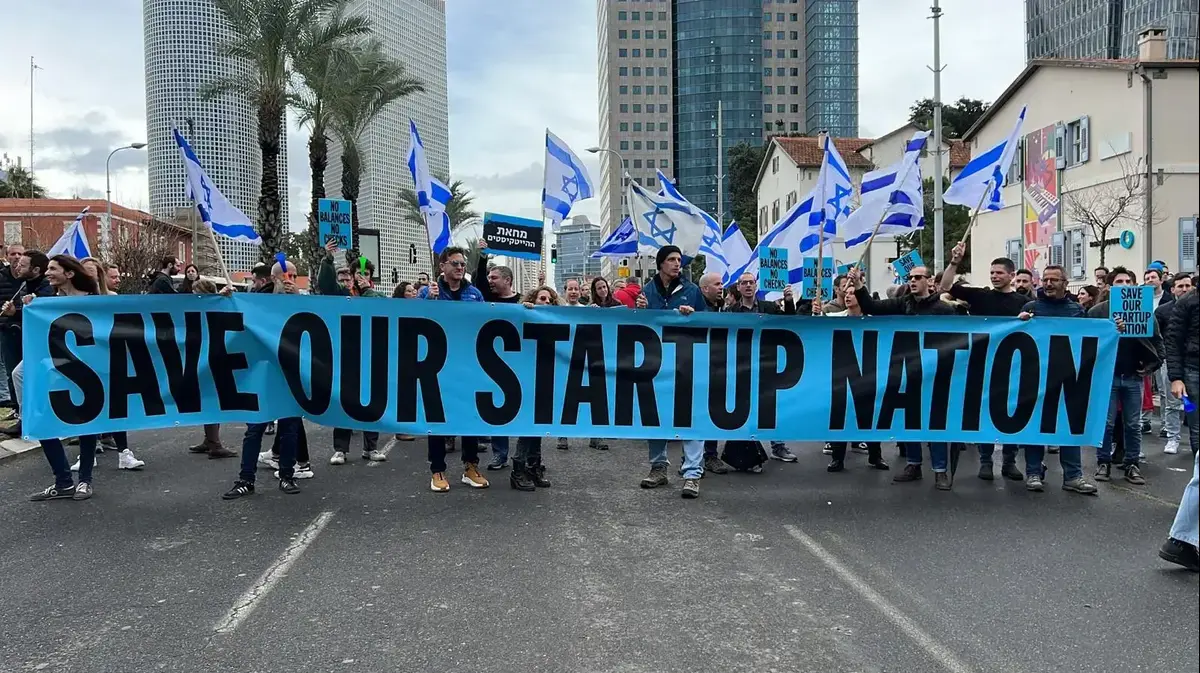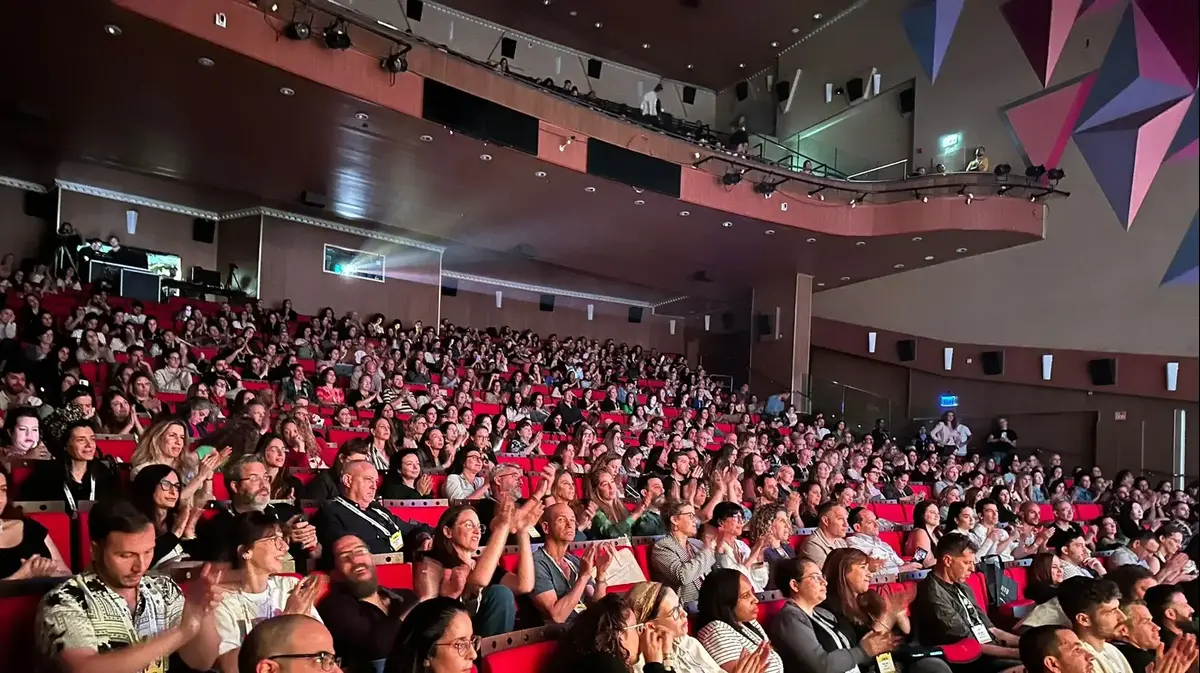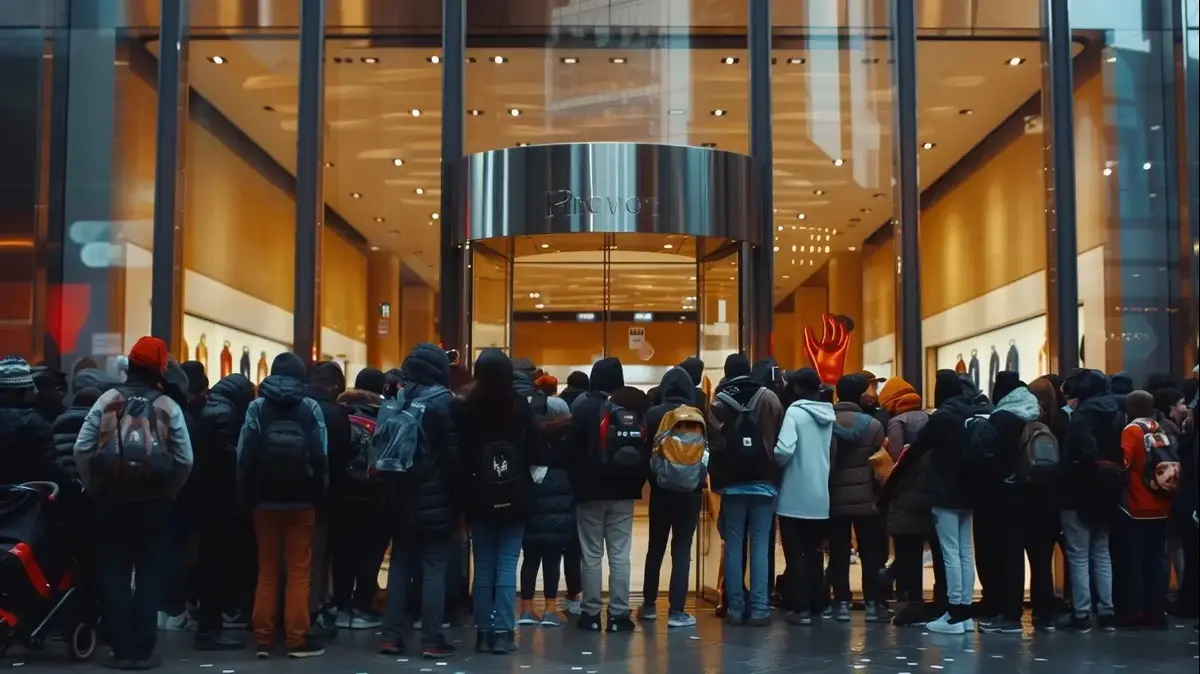The high-tech demonstration on Kaplan Street in Tel Aviv, second week at the same place. (Photo: Yanon Shalom Yathach)
Just less than two years ago, a branding trend that was passionately engaging.
Parties with millions of dollars, which included artists such as Nega Erez and Noa Kirel danced the high-tech industry, and large campaigns to recruit employees swept the streets of Tel Aviv and the digital.
As usual, what started in high-tech spilled over into the world outside the "bubble" while companies like am:pm, half as parody and half as leveraging the trend (RTM), came up with their own marketing moves that used the language of high-tech to recruit employees to their ranks.
It seems, at least for now, that times have changed.
The data shows that approximately 8,000 Israeli high-tech workers have been fired from 122 companies since last April and the forecast is that hundreds more workers will be fired in the coming months.
Now, the topic of employer branding is making headlines again, but for its negative aspects.
The recruitment campaigns are replaced by headlines about mass layoffs, and eye-popping parties are met with criticism and lively discussions on LinkedIn about the wastefulness in light of the state of the industry - especially in cases where the same companies simultaneously lay off dozens of employees.
Given this reality, is it possible to declare the death of employer branding?
Meaning is needed
Back in its heyday, what happened to the concept of employer branding, similar to other issues in the worlds of branding and marketing, is its reduction to external signs and partial and sometimes superficial processes.
As in too many cases, changing a logo and dealing with colors alone are entitled "rebranding process", so campaigns for recruiting employees or launching huge parties have settled under the category of employer branding - even when these did not arise from a deep strategic process that touched the identity of the organization, the reason for which it exists , and in the connection of the employees to the company's vision.
As long as we treat the subject in the same limited manner of job ads, however sophisticated they may be, sibous and parties, employer branding probably has nothing to offer organizations in a period of recession and layoffs.
But if we return to the basics - to the organization's narrative, to the unique way in which the narrative can project its unique value proposition to employees, and to the process by which employees are connected to the organization's purpose and vision - then this concept is guaranteed eternal life.
Meaning, connection and belonging to something bigger than us, are not passing trends, they are an essential element in our hierarchy of needs.
Especially at this time, when employees are in danger of being fired, economic instability, and feelings of disconnection from their workplaces ("the silent resignation"), and precisely in an era where consumers are looking at companies not only based on the value they offer to the customer, but also on the basis of their contribution to the world, to their conduct As employers, there is an impact on their perception in the eyes of consumers, as well as on the employees' motivation to help the company prosper and serve its customers well.
And as Simon Sink defines it perfectly: "Customers will never love a company, until first the employees love it."
It's all about connection
Hence, I call for employer branding processes to return to basic principles.
Jacob Morgan analyzed hundreds of global organizations like Facebook and Apple to find out how to create workplaces where people really want to work.
In his book "employee experience advantage", he describes three environments that affect the employee's experience: cultural environment, technological environment and physical environment.
Optimizing these three environments will improve, according to him, the involvement, commitment and productivity of the employees, and will help retain them in the company.
Let's focus on the cultural environment.
Ron Friedman examines the science of creating a productive and engaging workplace.
He relies on psychological research, neuroscience and behavioral economics to substantiate his claim that in order to create a sense of self-fulfillment and motivation, companies need to provide their employees with autonomy, expertise and purpose.
It also emphasizes the importance of social connections to promote engagement and creativity.
Michael Lee Stollard's conclusions in his book "connection culture" are similar.
According to him, building a corporate culture is necessary for the success of the organization.
He defines corporate culture as one that provides employees with a sense of belonging and purpose.
Stollard's inspiration to research the subject began after his wife was diagnosed with cancer.
Stollard felt that the kindness and concern shown by the hospital staff towards his wife affected her recovery process, and began researching the importance of workplace connection and how it affects employee well-being, engagement, and performance.
Stollard emphasized the importance of vision, value, and voice in creating a corporate culture, an equation that takes into account the importance of a common goal, recognizing the value of employees as people with unique needs and contributions, and the need to let employees make their voices heard and influence.
Employer branding in the field
Nordstrom is a luxury fashion company known for its excellent customer service.
The company emphasizes products designed by elite designers and personal styling advice.
They are committed to "turning every shopping experience into a positive one" and understand that this cannot be done without connecting the employees to the company's vision and goals.
Therefore, their employer branding focuses on creating an empowering culture and creating an environment where employees feel valued and supported in a way that also rubs off on customers.
The "one rule" philosophy of the company's employees has become a hallmark of the brand.
What does the one law mean?
"Use your best judgment in every situation. There will be no additional rules" and in a footnote they invite employees to feel free to contact a manager or HR with any questions at any time.
Southwest Airlines is the largest airline in the world in terms of the number of passengers it flies annually.
Despite being a low-cost company, it puts customer service and the customer experience at the center and has built a culture of fun, love and friendliness, which radiates to both the company's customers and its employees, as symbolized by the heart logo and the slogan 'Without a heart it's just a machine' just a machine).
The love and the people at the center as a goal create an excitement that makes people get up in the morning for work and this goal is communicated to the employees on a daily basis, whether it is when they gather together to clean the plane after the flight, give feedback on the company's procedures and policies, or when they are exposed to thank you letters from customers.
The empowerment of employees in the company does not end with banal actions and includes programs such as "Southwest Warriors" to support employees who are called up for military service and "winning spirit", a program that celebrates the achievements of employees including the President's Award ceremony.
In 2019, the company built a special training program for all company employees to identify and handle human trafficking offenses on the company's planes.
Is employer branding still relevant in an era of recession?
In conclusion, employer branding is not a passing trend that only applies in times of economic prosperity.
As in any branding process, the process of branding an employer needs to go back and define what the story of the brand is, what is the purpose for which it exists and examine how this purpose projects onto the company's employees and creates for them a corporate culture, a shared vision, meaning and voice.
Relying on a differentiating narrative leads to building a unique employer branding that highlights the organization's differentiation not only for the consumer but also as a workplace, when at the end of the day the two - the way the brand is perceived by consumers and the reputation of the organization as an employer - are connected to each other and influence each other and bottom line also on profitability the brand.
Alon Winpers is CEO and owner of the branding agency KATI THANDA.
Marketing and digital
in the headlines
Tags
Brand
Working
The labor market
Dismissal
High tech
the employment market















